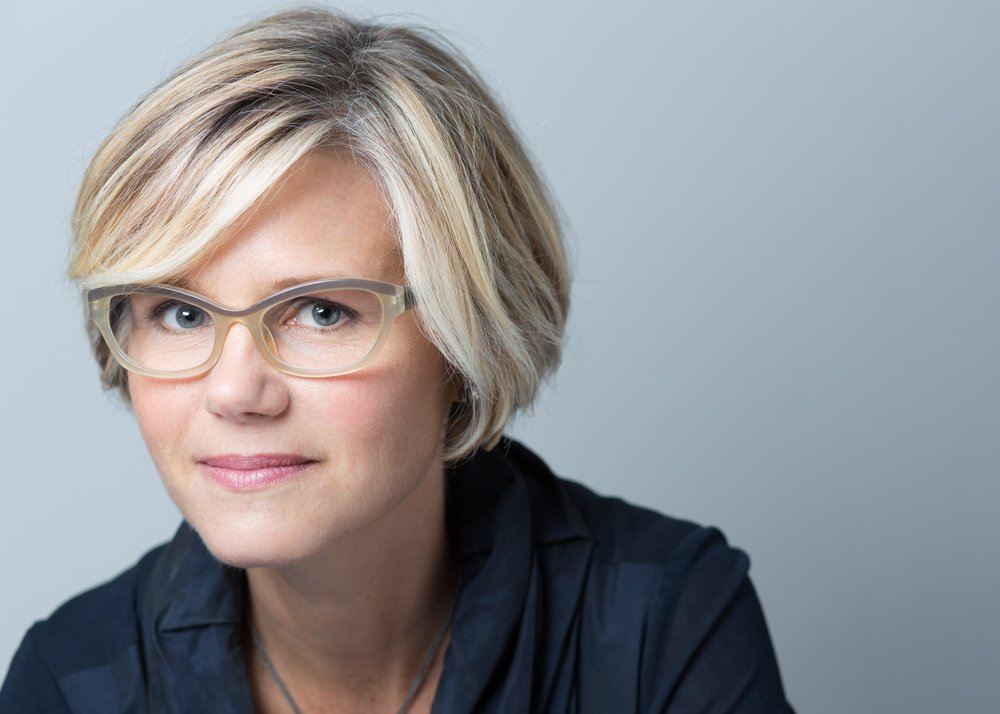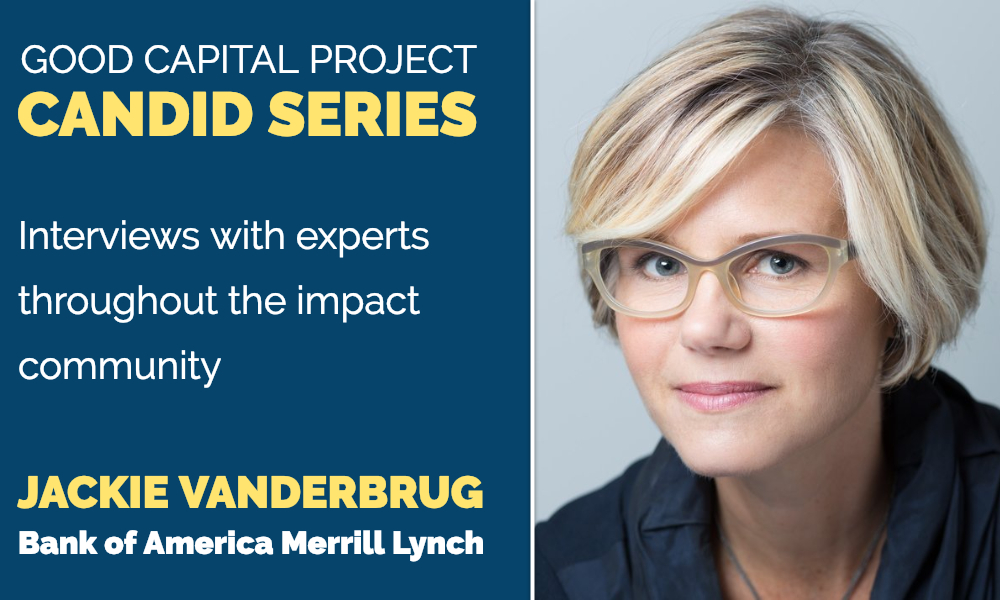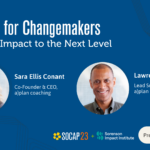
Jackie VanderBrug leads impact investing strategy for the CIO office of Bank of America Merrill Lynch’s Global Wealth and Investment Management group, which is the wealth management division of Bank of America.
Good Capital Project: What does impact investing look like at a mainstream firm?
Jackie VanderBrug: Impact investors seek to create and monitor social or environmental impact alongside financial returns. At Bank of America Merrill Lynch, we see impact becoming more popular among our clients; whether it is to avoid or promote certain areas through negative screening, find best-in-class companies, or enact change through shareholder advocacy. We use ‘impact investing’ as the broad term to depict what is traditionally sustainable, responsible, and impact investing.
GCP: At GCP, we’re focused on bringing impact to the mainstream financial community. What’s the role of large firms in mainstreaming impact?
The role of mainstream firms like Bank of America Merrill Lynch is critical to the future of sustainable investing. First, we are introducing the opportunity to new investors by breaking through the confusion and clutter around language. Recently, I made a ‘market decode’ module to translate conversations about ESG and impact investing into basic concepts. This type of education is critical for closing the gap between interest and execution.
There is also a fundamental role around research. For example, our lead U.S. equity analyst published papers saying she found ESG to be the best signal of future earnings that she’s seen in 20 years, which has been critical to debunking the myth of underperformance.
It’s also about the power of storytelling. We work to demonstrate why ESG matters through our own firm story. As we share our own environmental, social, and governance commitments and how how they are a part of our growth story, we are helping employees and clients better understand the value of ESG factors to investors and to companies.
Our CEO has said that using an ESG lens is critical for responsible growth. Every one of his direct reports has an ESG critical performance indicator on his or her dashboard. We also have an ESG council that reports directly to the board. All of those factors help our employees to understand why ESG is important to us and other firms. It provides a better understanding of how ESG and impact investing can be critical to the world we want to live in and for firms striving to achieve long-term performance.
GCP: What would you consider to be the salient argument driving greater adoption of impact?
JV: It’s a combination of value alignment, risk mitigation, and growth opportunities. Clients are motivated by holding corporations accountable, supporting specific issue areas, and having a positive impact.
In our research, 8 out of 10 investors believe companies should seek responsible growth by making a profit while taking responsibility for impact. However, when asking if ESG should be a consideration in investing, that number drops to 5 out 10 investors. About 37% of people are motivated by lower risk and opportunities for better returns, which indicates that ESG considerations helps firms become less susceptible to business risk.
GCP: Are there specific groups you see where interest is more prevalent than others?
JV: The aspirational gap is pretty significant across the wealth spectrum – roughly one-third of clients are interested in impact, but not yet investing.
Interest among women has stayed pretty consistent, but men are now catching up. According to our research on high net worth investors, women are 28% more interested in impact investing than men. As opposed to two years ago, when it was closer to 70%.
Younger investors and wealthier investors clearly are leading the charge. But about 1 in 4 investors from the Silent Generation, or those over the age of 72, are interested in impact investing, which is a significant number. It’s critical for mainstream firms to play a leadership role in closing the aspirational gap, and not to assume that only a niche set of clients have interest.
GCP: There is a common belief that the Millennial generation is driving this sector forward, but that is not an insignificant number of Silent Generation investors. Is it true the younger generations are driving interest or is it spanned across more age groups than we usually think?
JV: At some level, the answer to your question is yes – about 4 in 10 high net worth investors are either interested in owning or currently own impact investments. But the interest and ownership is higher for millennials – 77% and for Generation X – 59%.
It’s true this sector is driven by younger investors regarding interest and ownership, but that’s not to say there isn’t interest from the Silent Generation. I believe as more Baby Boomers retire, we will see business owners and business executives switching from building the best company in the world to building the best company for the world.
GCP: We’ve seen students driving this interest as well. What does it take to attract new hires with this interest and facilitate careers in impact?
JV: I am very encouraged by the interest and rigor of that interest from emerging generations coming out of undergraduate and graduate schools. One of the things we’ve done is support GCP & Wharton’s new initiative, Total Impact Portfolio Challenge. We are excited to engage some of our leaders across the CIO office to be mentors for teams from different universities. This complements the work we traditionally do with the MIINT challenge and the way students were engaging in that type of diligence, which is also part of our outreach strategy.
We also incorporated impact investing into our new advisor training programs. I work with new advisors to expose them to what we’re doing in impact and provide materials to incorporate impact into growing a practice. Those who are interested can become involved through different groups, such as our Impact Investing Portfolio Managers Group. They are engaged in conversations with asset managers on our platform who are high conviction impact managers. We regularly have conversations between our portfolio managers and impact fund managers to explain their strategies and discuss broad trends they are seeing in this space. We also have a set of impact investing advisors who meet regularly to talk about their practices and we have a set of analysts who support us by doing the ESG evaluations. Involvement depends on the route someone takes within the firm when they join, but there are plenty of opportunities for ongoing engagement.
GCP: How do you incorporate ESG into more product offerings to serve a wide client base and address client demand?
JV: It’s critical for us to be part of democratizing access to impact products. Specifically, Bank of America Merrill Lynch created a suite of CIO impact portfolios. These are total portfolios that align with our CIO asset allocation across stocks and bonds. This enables clients with a minimum investment of $5,000 to allocate to an impact portfolio. Now, clients are able to walk into any banking center and talk to a financial services associate about having ESG as a consideration in their portfolios.
GCP: Gender lens investing is a specific focus area of yours. What are some insights regarding opportunities within gender lens investing?
JV: Gender lens investing intentionally incorporates gender-based factors into investment analysis in order to increase gender equality or to decrease risk and increase opportunity. Some individuals use gender lens investing with a social motivation, while others are focused on a financial motivation.
This is a lens, not a limitation. This is not about reducing the investable universe, it’s about understanding that gender factors are increasingly material in how business operates.
There’s an abundance of research about gender equality on boards, and data supports the idea that diverse boards have better conversations and therefore reduce risks. Gender inclusive practices throughout a company’s value chain provide the opportunity for corporations to get the best out of their employees and win the war for talent and engagement.
Another area in which we have less research and more opportunity is in products and services. A company’s products and services should fully understand the needs of all of its consumers. All-male product development teams can struggle to fully understand the opportunity in products and services that benefit women.
GCP: Beyond not being a limitation, how does using a gender lens play into the larger mission of democratizing access to capital?
JV: The gender lens movement has engaged a set of asset owners. It has given a new set of tools to individuals who traditionally used philanthropy to enact change. It also has provided a new lens to investors, in which gender factors are being sharpened within an overall investment thesis and encourages new questions in due diligence. We have more engaged asset owners and a set of investors who have new tools at their disposal.
Women have different motivations in impact investing. Women’s top motivation as investors is meeting goals, which doesn’t seem like a foreign concept, but men’s top motivation is beating the market.
Women are also driven by passion about beliefs, over half feel strongly about supporting an issue, which is one-third more than men. Men are more likely to cite reduced risk and potential for out-performance. It’s interesting to see how men and women are coming at this from slightly different perspectives. Bank of America Merrill Lynch recently conducted research about women and investing, and the top regret for women (at about 41%) is not investing earlier.
My prediction is that 20 years from now, women will be saying that their top regret is not investing more with their aspirations for gender equality or environmental sustainability. We will see those aspirations can achieve impact and financial performance.
GCP: What is the intersection between gender lens and sustainability?
JV: I believe we are not going to meet our global goals of transitioning to a lower carbon economy without fully integrating gender lens. The integration of gender lens remains an under-explored lever in the advancement of sustainability. For example, the Paris Agreement calls for gender equality and women’s empowerment and UNDP has five training modules on gender and climate change, but gender strategies and environmental strategies are still thought of in separate silos.
One of my passions is to take a look at the intersection of gender and the environment – how do we create a gender impact accelerator for green bonds, what can we do in municipal finance to address the unique transit move of women, and how can inclusive practices be part of growth-stage energy companies? There is information available on this intersection, such as the role of women as household managers and their impact on household energy decisions or the role of land and women as small shareholder farmers, but gender and the environment still aren’t being seen as synergistic.





